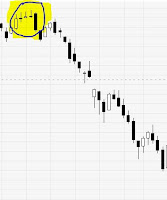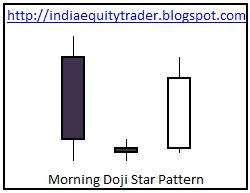We have seen basic candlestick construction in the previous post. As promised, I am back with some patterns in the candlesticks. These are slightly different than the chart patterns. When candle sticks charts (usually over a longer period) are analysed for trends with the help of some indicators/oscillators for the presence of some established patterns (trends, head and shoulders, double tops, etc), that time we are referring to the chart patterns.
However, candlestick patterns are usually analysed for a single candlestick. The candlestick being studied may be for a day/week or even month. These patterns tell us about strong trend, impending trend reversal or exhaustion of trend. Let us see them one by one.
We will be discussing;
- · Doji
- · Hammer
- · Hanging Man
- · Inverted Hammer
- · Shooting Star
- · Marubozu and
- · Spinning Top
This should cover all that we need. After that we will see some very simple patterns which need more than one (2/3) candlestick to form… like bullish/bearish engulfing, morning star, three white soldiers or three black crows. Then we will proceed to chart patterns in the end.
Doji:
As seen in the image above, Doji is formed when opening and closing price is almost equal. Doji themselves do not indicate much. They are mostly neutral patterns indicating indecision in the market. A long legged doji indicates higher amount of indecision with price fluctuating a lot on either sides during the period under consideration. It shows that both bulls and bears are slugging it out without any clear winner.
A gravestone or dragonfly Doji on the other hand indicates that there may be a trend reversal just around the corner in the prevalent trend of the underlying. They indicate that the direction of the trend may be in for a change which then needs to be confirmed with the multi-candlestick patterns which we will see in a few posts.
Candlesticks is one subject which though I read first time probably 5 years back; still continues to amaze and excite me. So there lies a risk that I may spend more than needed time on them. Please feel free to point it out if it’s happening or in case if you want more, do let me know. I will be more than happy to offer you candlelight posts... not dinner.
Stay tuned for other patterns.














